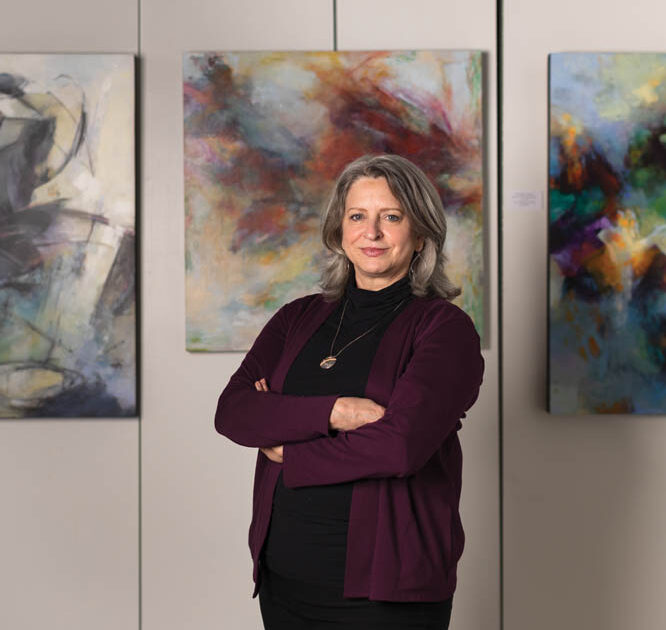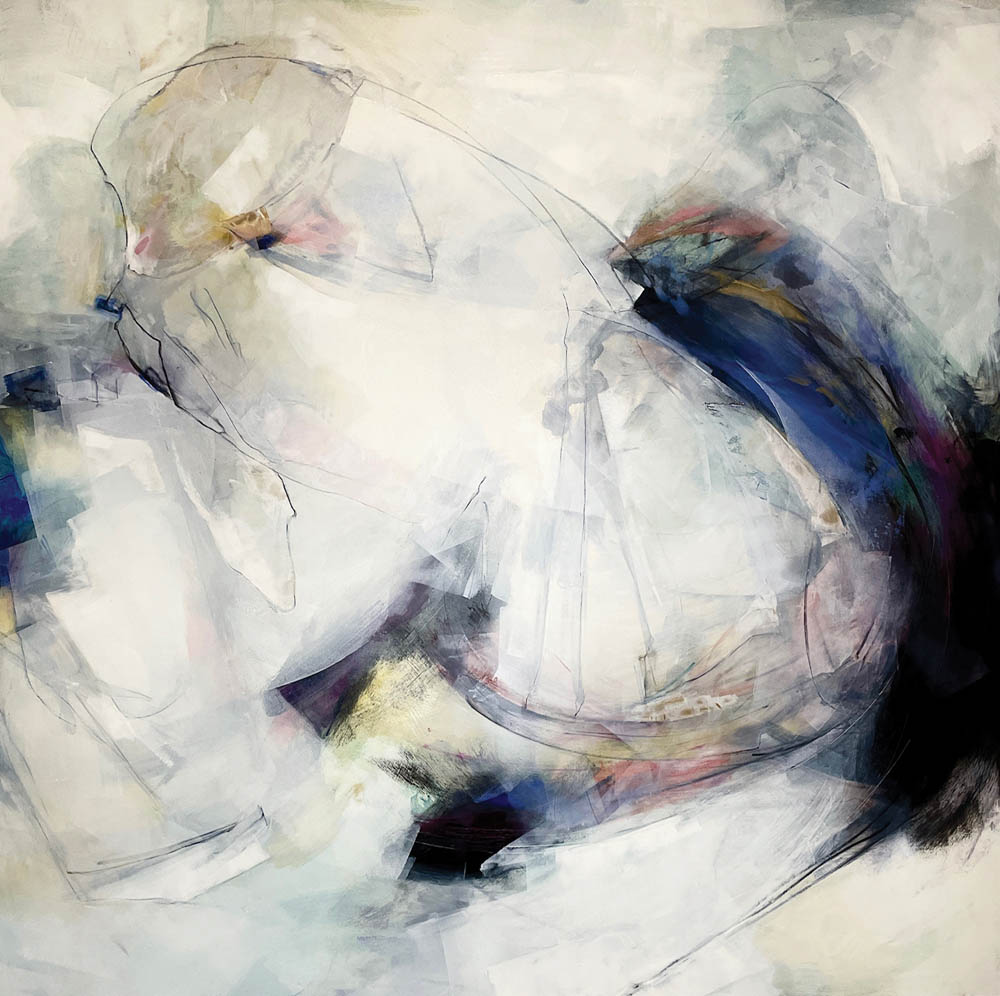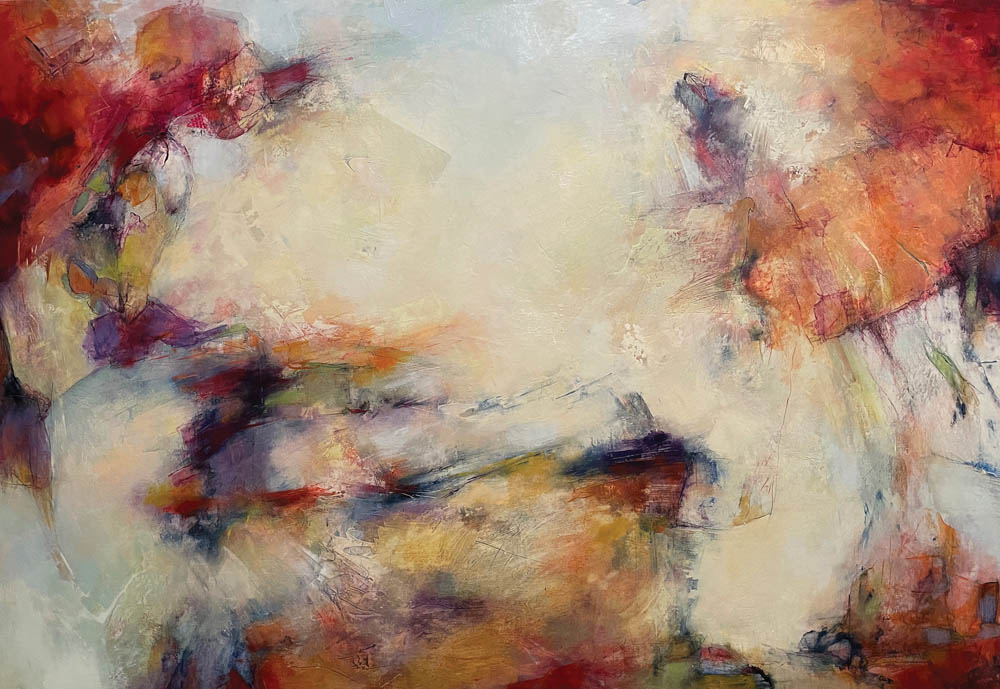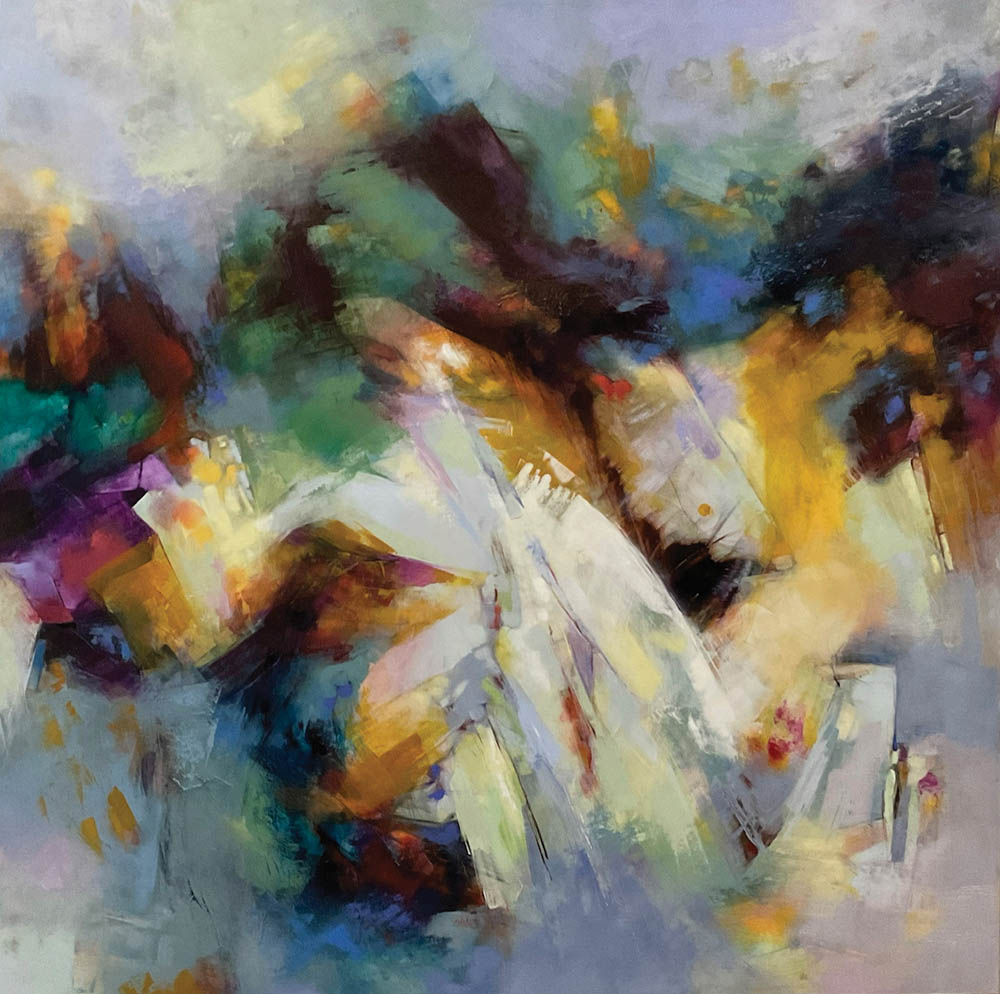
AnnMarie LeBlanc longed for the mountains all her life. Portrait by Colby Rabon.
Hendersonville-based artist AnnMarie LeBlanc grew up in Southeastern Louisiana, but home is where the heart is, and LeBlanc found her home in the heart of Pisgah National Forest, where she came 30 years ago to go on a backpacking trip.
“This place has its own unique, magical qualities,” says LeBlanc. In Western North Carolina, she observes, “The mountains touch the sky. Earth touches the heavens. The waterfalls are perpetually changing, which is a reflection of all the nature around us. I had a job as a young professor to go back to, something I loved and was privileged to do. But leaving here after that trip, I felt like I was leaving home.”
LeBlanc’s has been a rather peripatetic journey, propelled by her interest in art, design, and education. She graduated from Louisiana State University with a Bachelor of Fine Arts degree and went on to live in Massachusetts, Indiana, and Ohio — doing postgraduate studies at the University of Massachusetts, getting her MA from Purdue, and earning an MFA at Bowling Green State University. Then she taught at universities in Minnesota, Michigan, Indiana, and Ohio — and became a professor and then a dean at Robert Morris University in Pittsburgh. Her artwork, found in more than 300 private and corporate collections worldwide, has also traveled to more than 65 national and international exhibitions.

LeBlanc painted in grad school and then began to adopt digital work as a professor because it was creative and also efficient; convenient. “I could leave class and go to my office, where using a computer was like being in a painting studio.” Soon the digital process literally and figuratively blended with paint. “In digital, you can do things like layer colors and add translucent imagery. Then you can layer over that with paint. I appreciated how it let me build a history on the surface of the artwork.” She did that by removing part of the surface to reveal what was underneath. Then she could apply more layers and repeat the process — deepening the visual texture, depth, and complexity.
All the while, she knew that she someday wanted to return to WNC to resolve her long-distance love affair with the place. Moving to “the land of the sky” two-and-a-half years ago also transported her artwork into new territory. For decades, she had explored digital mediums and their evolving intersection with paint, but these mountains inspired her to work exclusively in paint, sometimes layering in cold wax mixed with pigment.

“My tools are brushes, scrapers, and brayers [rollers]— and I tend to start with washes in ink or acrylic or thinned-down oils. This allows me to break the all-white surface and begin with a simple composition. This underpainting is all eventually covered up with oil pigments and cold wax mixed with oil pigments.
“My process is somewhat intuitive,” she goes on. “But there are times when I step back to look at my work and contemplate it from a strictly compositional point of view — and maybe that’s because of my academic background. Throughout the creative process, I tend to turn the image around 90 degrees at a time, to see it anew and then work on it rotated.”
Early in LeBlanc’s career, a newspaper mistakenly published a picture of one of her paintings upside down. Hey, sometimes it’s hard to tell which way is up with abstract canvases. At the time it annoyed her, but rethinking it, she discovered special value in not limiting her works to a particular orientation. She started signing paintings on the back, so the signature wouldn’t telegraph “this side up” — and she actively encourages those who collect her art to display it any way they want, or change the orientation from time to time to enjoy seeing it in a different way.

That’s an unusual permission for an artist to grant, but it’s liberating for viewers, LeBlanc observes. Plus it engages them as participants in the creative process — a fun dynamic that perpetually nurtures the relationship between viewer, art, and artist.
That approach serves as a healthy, solution-oriented metaphor for life, too, which often benefits from a shift in vision and perspective. LeBlanc thought about that when she stepped down from her professorship to focus full time on painting. While packing to move to Hendersonville, she reminded herself of the wisdom of Joseph Campbell, who wrote, “We must be willing to get rid of the life we’ve planned, so as to have the life that is waiting for us.”
AnnMarie LeBlanc, Hendersonville. The artist’s work is represented regionally at Art on 7th, 330 7th Ave. East, Hendersonville. LeBlanc was recently featured in Collect Art Magazine . For more information, see annmarieleblanc.com and on Instagram @leblanc_annmarie
